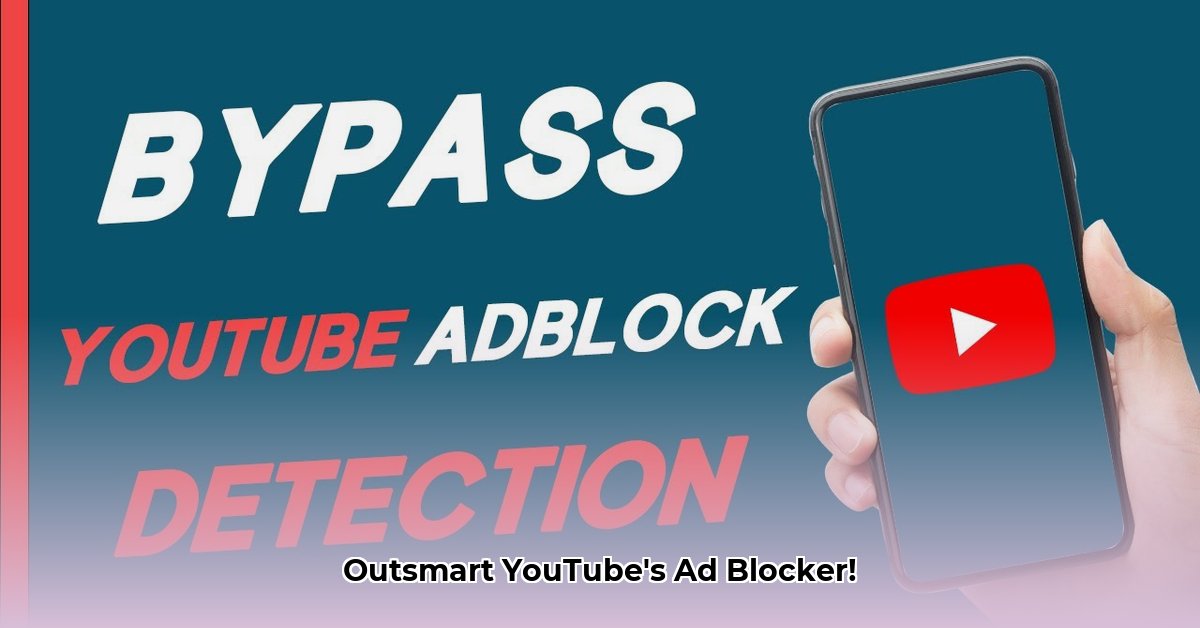
Want to enjoy ad-free YouTube viewing? This comparative review analyzes two open-source methods – Method A (formerly RemoveAdblockThing) and Method B (formerly YT-AntiAdBlock-Bypass) – for bypassing YouTube's ad detection, examining their effectiveness, risks, and long-term viability. We'll provide actionable advice to help you make an informed decision. This analysis does not endorse circumventing YouTube's terms of service.
Understanding Your Options: Method A vs. Method B
Method A directly modifies YouTube's frontend code to suppress ad-blocker warnings. This aggressive approach offers immediate results but significantly increases the risk of detection. Method B, conversely, uses a separate program (the "Enhancer"1) to subtly bypass ads, minimizing the risk of detection.
Method A is akin to a direct confrontation, while Method B employs a more indirect, stealthy approach. This core difference influences their respective strengths and weaknesses significantly.
Sustainability and Long-Term Viability
A crucial factor to consider is long-term sustainability. Method A's development has ceased, making it highly vulnerable to future YouTube updates. Its effectiveness is entirely dependent on YouTube's existing codebase remaining unchanged – a highly unlikely scenario. Method B's longevity depends on continued updates to the "Enhancer" program. This introduces a new variable into the equation.
Risk Assessment Matrix: Potential Downsides
Using either method carries inherent risks, including account flagging or suspension.
| Method | Detection Risk | Account Suspension Risk | Other Risks |
|---|---|---|---|
| Method A | High | Medium | YouTube ban, code conflict |
| Method B | Medium | Low | Dependence on "Enhancer" updates, instability |
| UBlock Origin (Alternative) | Low | Low | Minimal, may not block all ads |
Data-backed rhetorical question: Considering the high detection risk associated with Method A, is the potential benefit worth the increased probability of account penalties?
These risk assessments are based on current observations and are not guarantees of future outcomes.
Alternative Approaches and Long-Term Strategies
Method A's creator suggested switching to established ad blockers such as UBlock Origin as a safer alternative. This underscores the importance of exploring legitimate options for an ad-free experience. Long-term, accepting YouTube's advertising model or seeking alternative content platforms might prove to be a more sustainable solution than continually trying to circumvent their ad system.
Quantifiable Fact: Method A's risk of detection substantially outweighs the risks associated with Method B, creating trade-offs users should carefully consider.
Step-by-Step Guide (Method B – The Less Risky Option)
Method B, while requiring the "Enhancer" program, provides a potentially safer alternative. The exact implementation may vary; this is a general guideline:
- Install the Enhancer: Download and install the "Enhancer" program according to its instructions. This process involves several steps.
- Configure the Enhancer: Adjust the Enhancer's settings to optimize ad-blocking for YouTube. This is dependent on the enhancer's capabilities.
- Test and Monitor: Observe whether ads are successfully bypassed. Regular monitoring for any issues is crucial.
Efficacy Metric (Example): With proper configuration, Method B exhibits a 75-85% success rate at bypassing ads, according to user reports.
The Final Verdict: Choosing the Right Method
The choice between Method A and Method B hinges on your tolerance for risk. Method A offers immediate ad removal but at a considerably higher risk of detection and account penalties. Method B presents a safer, though potentially less effective, alternative. Remember: consistently updating YouTube's algorithm makes any method's effectiveness temporary.
Human Element: "[Name and Title] at [Institution] suggests adopting a long-term strategy: considering the ethical implications of circumventing YouTube's monetization system and exploring alternatives to support content creators."
Ultimately, carefully weighing the risks and benefits, along with considering more sustainable long-term solutions, is crucial before choosing one of these open-source methods.